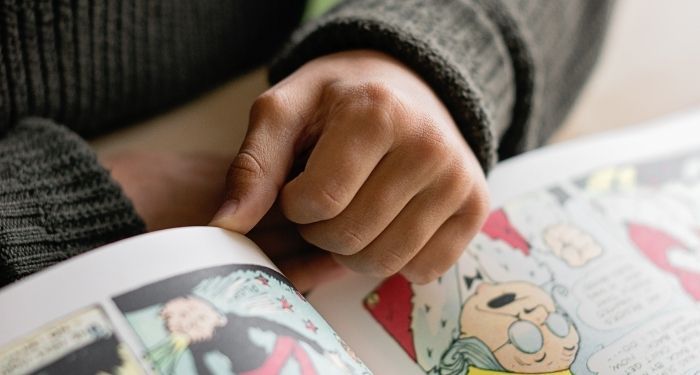
Why Graphic Novels Are Great for Learning About History
Few things infuriate me more than the contempt some readers hold for graphic novels and comics. This is probably only surpassed by people who still — in the year 2022 — claim that audiobooks don’t count as reading.
The book world is filled with choices from genres to mediums and the number of options available should be a reason for joy, rather than disregard and elitism. Personally, I am more than happy to have choices, and to be able to enjoy books in such different and fun ways, including print, digital, and audio. There is not a medium I will not try, and while I have my favourites, I am glad there are options for the tastes and needs of each of us.
This said, I got into graphic novels a bit late. Or rather, I started my reading adventures with comics, and then, after taking the step into books with mostly just text when I was about 10, I only picked up comics again when I was about 14 or 15. At the time I found a couple of Calvin And Hobbes and Baby Blues at my local library and I never turned back.
I find comics, especially about superheroes, to be a bit more overwhelming, since I usually want to start a series from the absolute beginning, and there is an infinite amount of comics out there to keep up (my TBR is big enough as it is), but I find graphic novels an absolute delight.
I first started considering graphic novels as a tool for learning when I picked up Hilda from my local library in an attempt to start reading in Dutch. In the last few years, though, I realised how powerful and helpful they can be when it comes to learning more about history, about culture, and about the world and the people around us.
In school, we often learn one side of history — usually the coloniser’s side, which is always dressed up to make them the hero of the story — and I admit that history was never my strong suit. If you look at my grades you may believe otherwise, but the truth is, I had a tendency to gobble up theory for exams, and then forget all about it once the exams were finished.
I do like history, though, and I love learning, but I fear the way we are taught most things does not help information click in my brain to allow me to understand and memorise things in the long term. Not only that, but I don’t like studying, so learning in a fun and relaxed way is how things usually stuck to my brain.
As an adult who likes knowing what is going on in the world, but often lacks the patience to read extensive historical texts (that hasn’t changed much since school times), graphic novels have become an amazing way of learning about history.
From Persepolis by Marjane Satrapi, to Sapiens by Yuval Noah Harari (whose graphic novel is much easier to ingest than the book), to They Called Us Enemies by George Takei, I have learned details about portions of history I knew almost nothing about, or had a reduced understanding of. I had no feeling that it was too complicated, too extensive, or too boring to engage with.
Of course, historical fiction novels are good at doing that too: I have learned a lot about the history of Korea and Japan’s conflict through novels like Pachinko by Min Jin Lee and The Mermaid Of Jeju by Sumi Hahn, and about the dictatorship of Paraguay (and what it was like to be queer then) through Cantoras by Carolina de Robertis. Not only are these novels a fantastic work of literature, they are also a great lesson in historical events.
However, fiction can often be misleading, details and historical accuracy are not always to be expected, and there isn’t always a complete note on the historical modifications, which relies on you doing the research on your own. And, of course, a lot of those novels, like most nonfiction books out there, are more extensive. But I find that graphic novels allow for an easier understanding of these parts of history, because they are a simplified, less extensive take on it. Moreover, illustrations and artwork also help, and they allow you to take some time to really look at what you are being shown.
If you are looking to learn more about certain moments in history, check out the graphic novels available. They might be more fun to read and provide a clearer image of what you are learning. This will help you figure out the broader aspects of history and provide you with a good basis for further research.
Plus — and this is truly a plus — they are usually absolute works of art, and they will look amazing on your shelf.
If you are looking for more graphic novels to help you learn about history, here are a few you will appreciate:
Middle Grade Books About Escaping Nazis
Graphic Novels And Graphic Nonfiction About Stuff You Should Care About














